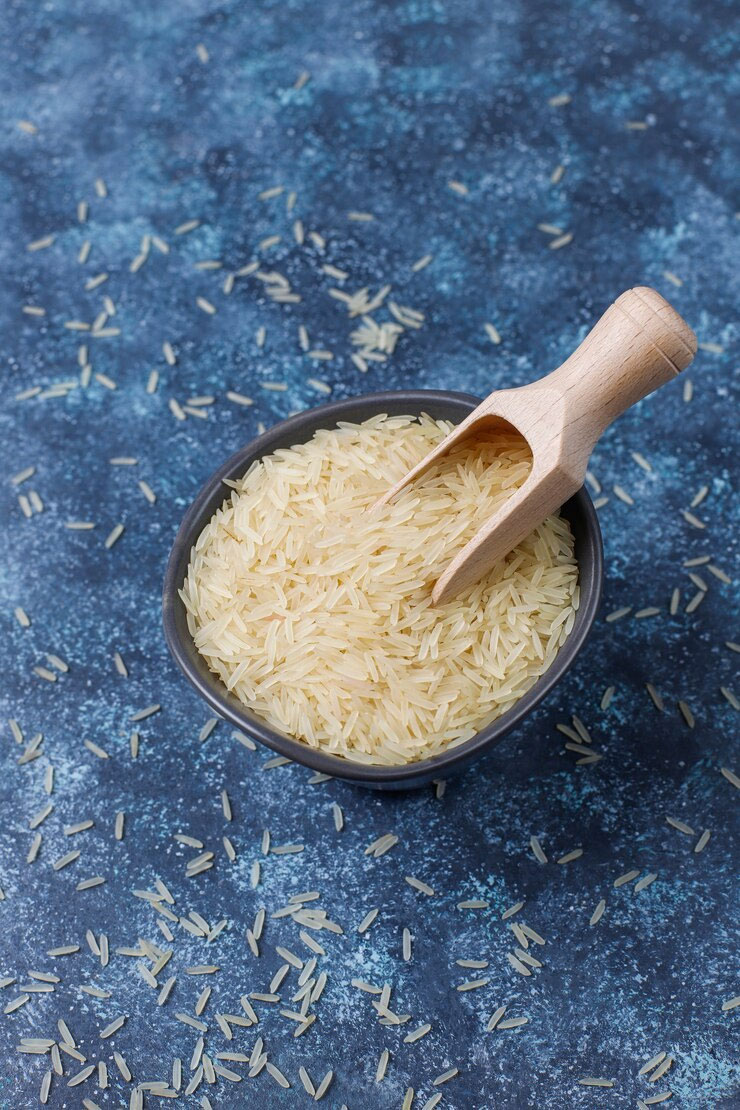Basmati Rice

Basmati Rice
Basmati rice is not just a grain; it embodies romance, tradition, and culinary artistry. Grown in the lush foothills of the Himalayas, Basmati rice is celebrated for its long, slender grains, subtle nutty flavors, and enchanting fragrance that captivates food lovers worldwide. It is often considered the "queen of rice," preferred for its extraordinary quality and versatility in various culinary creations. Below are the distinguished offerings in the Basmati category, each with unique characteristics that cater to diverse culinary needs:
Basmati rice is more than a grain; it is romance, tradition, and culinary art. Cultivated in the rich foothills of the Himalayas, Basmati rice is renowned for its long, narrow grains, delicate nutty flavors, and alluring aroma that entices food enthusiasts across the globe. It is usually regarded as the "queen of rice," favored for its exceptional quality and adaptability in numerous culinary dishes. Following are the renowned products in the Basmati segment, each with its own distinct features that suit various culinary requirements:
| Sr. No. | Name of Rice Variety | Type of Rice |
|---|---|---|
| 1 | Basmati | Raw, White Parboiled |
| 2 | 1121 | Raw, Steam, White Parboiled, Golden |
| 3 | 1718 | Steam, White Parboiled, Golden |
| 4 | 1509 | Steam, White Parboiled, Golden |
| 5 | Sugandha | Steam, White Parboiled, Golden |
| 6 | 1401 | Steam, White Parboiled |
| 7 | PUSA | Raw, Steam, White Parboiled, Golden |
Information on Basmati Varieties:
- 1. Basmati: This classic type is the ultimate Basmati rice, with long grains that increase dramatically on cooking. It has a soft floral fragrance and light texture, which make it ideal for biryanis, pilafs, and high-end preparations. Plain or used as a foundation for lavish curries, Basmati rice is an eternally popular classic.
- 2. 1121: Described as being one of the longest and most superior grains of Basmati on the market, this strain is in high demand for its superior cooking attributes. It boasts a better aroma because of the special conditions of cultivation and can be found in raw, steam, white parboiled, and golden. Perfect for delicate dishes like Hyderabadi biryani, its long, distinct grains offer a refined dining experience.
- 3. 1718: Known for its superior cooking quality, 1718 Basmati rice contains a light nutty taste and a higher quality aroma that lifts any meal. This variety is usually differentiated by its golden color when parboiled, which also raises its nutritional qualities. It works well in pilafs and complex curries and is a top choice for festive seasons.
- 4. 1509: This Basmati type is loved for its fragrant odor and flavor. With the cooking characteristics of the rest, it swells elegantly and preserves flawless fluffiness. It is most preferred for formal dinner parties and ceremonies, served by the side of aromatic curries or kabobs.
- 5. Sugandha: Suggestive of its name—"fragrant" in Hindi—Sugandha rice is characterized by its sweet aroma and sticky consistency. A popular pick for everyday dishes, it is especially pleasing in plain khichdi or nourishing pilafs that allow it to display its subtle flavor.
- 6. 1401: Famous for its intense fragrance and rich nutritional value, the 1401 Basmati rice cooks to a light, fluffy consistency that envelops the spices' flavors perfectly. Used in classic recipes or creative ones, this rice brings a touch of opulence to mundane meals.
- 7. PUSA: This Basmati hybrid variety blends high yield traits with superior quality. PUSA rice is so versatile that it suits different modes of cooking, whether pilafs or fried rice recipes. Its strong aroma and subtle flavor make it a perfect selection for multi-cuisine.
Subscribe to our newsletter
Enter your email address to register to our newsletter subscribe